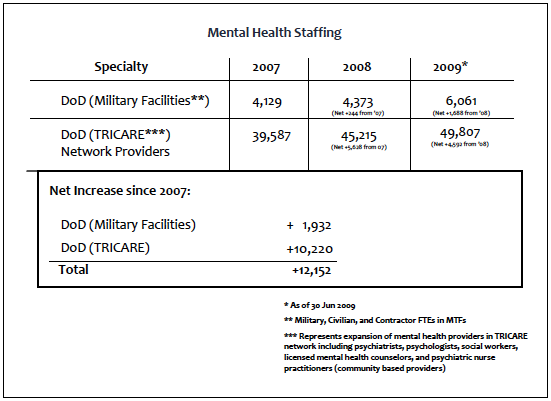The Pentagon has told Congress that “due to increased screening referrals and help-seeking in the face of sustained operations,” the number of mental-health professionals working for the military jumped from 43,716 in 2007 to 55,868 in 2009 — a 28 percent increase.
Among those working full time for the military, the total mushroomed from 4,129 to 6,061, a 47 percent boost. Private, part-time mental-health workers grew from 39,587 to 49,807, a 26 percent increase.
Part of the hike is due to the growth of family members’ mental-health visits, which have been climbing by 15 percent annually. The report also notes that the Army plans on boosting its active-duty mental-health corps from 1,277 in 2010 to 1,794 in 2017, a 40 percent rise.
Not sure how much we can trust these numbers, though. The 13-page report containing them has some strange sentences:
— “The Services report that they currently have the provider types they do not need any new mental health specialties.”
— “This rendered exploration of feasibility without any practical reason for further consideration.”
— “Since 2006, however, there has been on a continuous increase in provider numbers to help meet increased patient demand.”
When I visited Fort Campbell, Kentucky, last year, soldiers there complained about the difficulty they had understanding some of the foreign mental-health providers assigned to them. Now I know how they feel. It’s pretty amazing that Assistant Secretary of Defense for Health Affairs Jonathan Woodson would forward a report to congressional leaders, under his signature, containing such language. Let’s hope his folks’ therapeutic skills top their proofreading chops.



